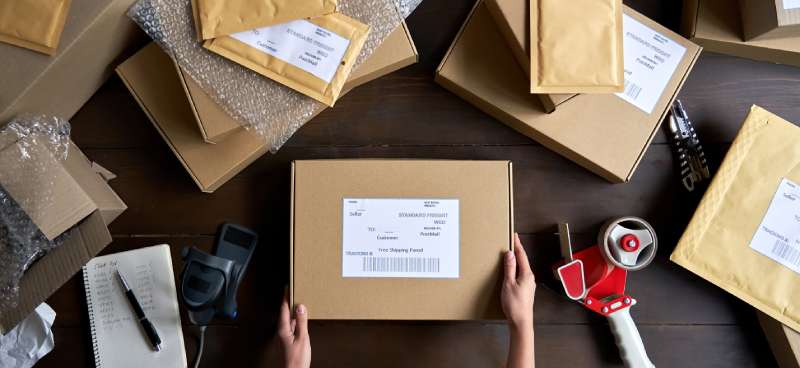The Most Common Packaging Materials Used in Shipping
 Packaging makes sure that products reach their destination safely and intact during shipping. Choosing the right packaging materials can significantly reduce your company’s shipping costs and minimize damage during transit. Continue reading to explore the most common packaging materials used in shipping, providing you with practical insights to make informed decisions.
Packaging makes sure that products reach their destination safely and intact during shipping. Choosing the right packaging materials can significantly reduce your company’s shipping costs and minimize damage during transit. Continue reading to explore the most common packaging materials used in shipping, providing you with practical insights to make informed decisions.
Cardboard Boxes: The Workhorse of Shipping
Cardboard boxes are the go-to choice for shipping due to their durability, affordability, and versatility. These boxes come in various sizes and strengths, making them suitable for a wide range of products. The fact that cardboard is lightweight helps keep shipping costs down.
This material is easy to recycle, making it an eco-friendly option. When selecting cardboard boxes, consider the differences between secondary and primary packaging. Secondary packaging provides extra protection for primary packaging, ensuring the product’s safety throughout shipping.
Bubble Wrap: Protecting Fragile Items
Bubble wrap protects fragile items during shipping. Its air-filled bubbles provide cushioning and absorb shock, preventing damage to delicate products. You can find bubble wrap in different sizes and thicknesses, allowing you to choose the best option for your specific needs.
To maximize its effectiveness, wrap items securely and use multiple layers if necessary. You will reduce the risk of breakage and maintain customer satisfaction by incorporating bubble wrap into your packaging strategy.
Polyethylene Bags: Versatile and Water-Resistant
Polyethylene bags are a versatile, water-resistant packaging material that protects products from moisture and dust. These bags come in various sizes and thicknesses, making them suitable for a wide range of items. They’re particularly useful for packaging clothing, electronics, and other sensitive products.
Their lightweight factor helps lower shipping costs. Consider using these bags with other packaging materials to enhance protection and ensure your products arrive in perfect condition.
Foam Peanuts: Filling Empty Spaces
Foam peanuts will fill empty spaces in shipping boxes, preventing items from shifting during transit. These lightweight, loose-fill packaging materials provide excellent cushioning and shock absorption.
While foam peanuts are not the most eco-friendly option, biodegradable alternatives are available. To use foam peanuts effectively, fill any voids in your shipping boxes to ensure products remain secure and undamaged.
Padded Mailers: Lightweight Protection for Small Items
Padded mailers are ideal for shipping small, lightweight items that require protection but don’t need a full-sized box. These mailers have a padded interior lining that provides cushioning and prevents damage during transit. Padded mailers come in various sizes and are perfect for shipping items like jewelry, cosmetics, and small electronics.
Understanding the common packaging materials will help your company choose the right packaging material for your shipping needs. You also have to consider factors such as the nature of the product, the level of protection required, and cost-effectiveness. It’s essential to strike a balance between protecting your products and minimizing shipping costs.



5 Comments
heather
I love having all the correct shipping supplies on hand when I am packaging something up. Love me some bubble wrap.
Jeanna Massman
Thank you for the information! It’s very helpful.
Terri Quick
Thank you for sharing this great & useful information
gloria patterson
Shipping has got so expensive. If you have the packing thats great but if you have to buy it. Sad to say I have got to the stage where I don’t want to do the shopping, packing, mailing………. etc.
I either find out what to get on amazon and have it shipped or I just sent a check. Some times cash is the best gift.
Barbara Cissell
i’m glad I found this.I am an online seller and need all the help I can get.